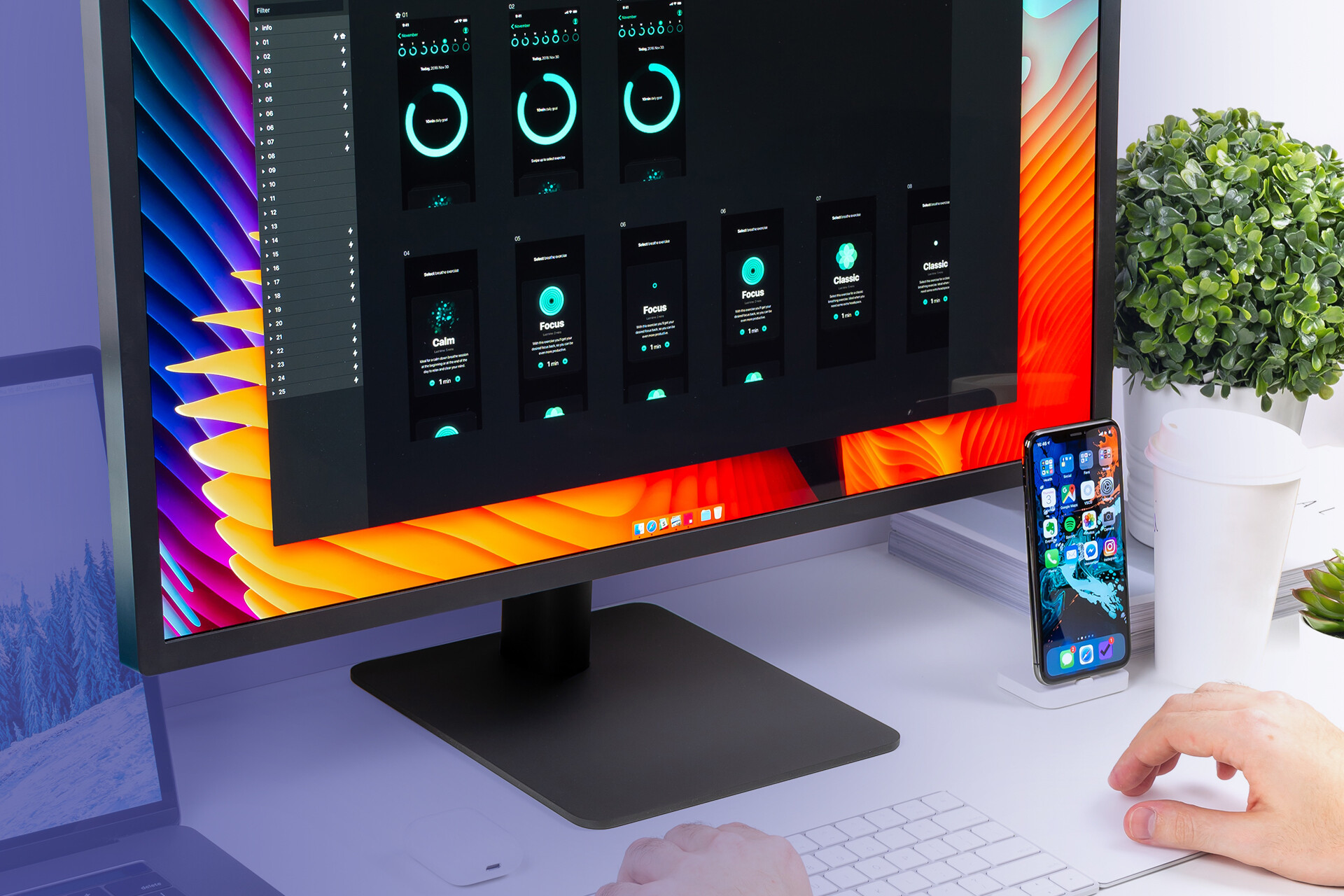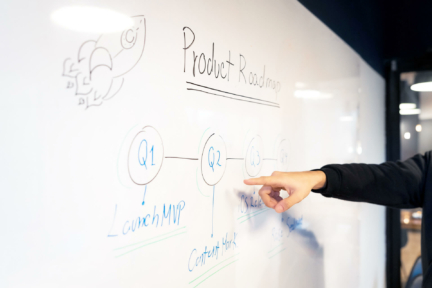History has witnessed several doomed apps. There’s Formspring, Clinkle, Quibi, Auctionata, and even Google Wave — where millions of dollars went down the drain.
While there were many reasons why these applications shut down, neglecting application scalability is one we must recognize.
Seasoned software developers and successful startup founders reveal that app scaling has been on their radar since day one — right from the ideation stage. In fact, they started working on it as soon as their MVP received its first green signal.
So, in this guide, we’ll outline how to prepare your minimum viable product (MVP) for app scaling and why it matters.
Let’s dive in!
Why is scalability crucial for the success of digital products?
If you’re confused about what app scalability is, it is the capacity of an app to grow with user demand. This means that if your app grows from 50 to 100 users today, it should be able to function perfectly on all 100 devices.
Why is this important? Well, because ignoring application scalability can mean:
- User frustration: When new users flood in, and your app can’t handle them, they’ll experience slow load times, errors, and crashes. This frustration can lead to negative reviews and might even land your app in the 77% that users abandon after 3 days of download.
- Lost opportunities: User frustration automatically translates to a loss of money-making opportunities. For example, imagine a sudden surge in interest due to a marketing campaign or a viral trend, but your app can’t handle the increase in user demand.
- Reputational damage: If users have a bad experience with your app because of scalability issues, they’ll share their disappointment on social media and review platforms. This can harm your brand’s reputation and trustworthiness.
- Resource inefficiency: Without a rigorous scalability plan, you might need to constantly invest in more servers, infrastructure, and technical support to meet user demand. This can be costly and inefficient in the long run.
So, what’s the lesson here? Digital products are not so generous with time. You don’t get large windows of time between growth stages.
And if you plan to be successful, your user base will grow. You have to be accommodative of it, which means a scalable application is not an option. It’s a requirement!
3 common challenges when scaling an MVP
Your MVP is supposed to be the earliest version of your product with limited features but complete functionality.
What does this mean? Look at this image:
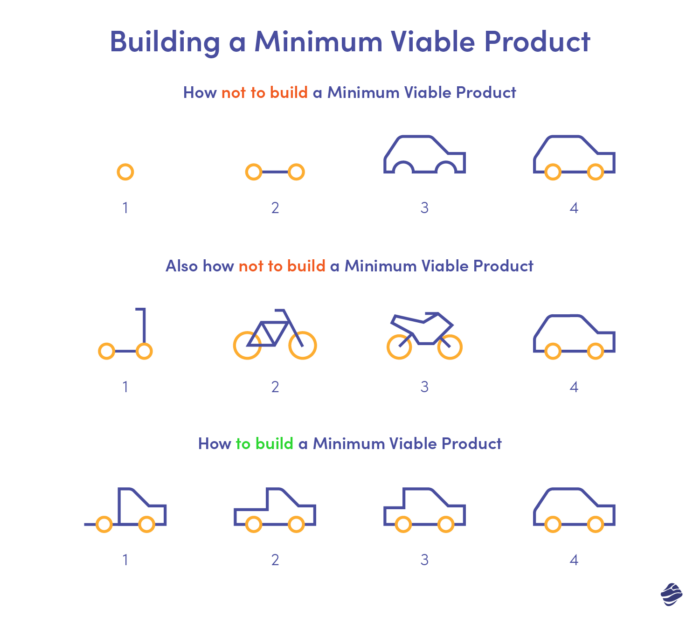
The idea here is to build a low-budget version of your final product that:
- Delivers its primary purpose: It should solve the main problem for the target user. It does not need to offer fancy or complex features — you can hold back on aesthetics, too.
- Helps you gather user feedback: Your MVP should also help you figure out the specifics of your target user, potential market, and areas of improvement.
Building such a version of your product is relatively easy compared to the whole product. However, it is also the phase of blunders.
It’s when founders rush the process, make hasty decisions, and end up facing the following issues when it comes to scaling apps:
1. Technical debt accumulation
Many founders adopt technical shortcuts to get the product into the market quickly. For example, they might use flat files instead of a database, which can lead to performance issues as data grows.
Similarly, they may not prioritize documenting code, making it extremely difficult (and costly) to modify the code base later.
Shortcuts like these can accumulate as technical debt. You might face issues like slow load times, frequent crashes, or difficulty in adding new features.
To address this issue during the MVP scaling stage, you’ll have to invest heavily in technical refactoring — particularly code refactoring and database optimization.
And if you ever find yourself dealing with technical debt accumulation, first dive into the roots of your problem and then set out to solve them. Otherwise, you might end up spending more than necessary. For example, if refactoring is the issue, you first want to explore what code refactoring is and then hire the right people to do it.
2. Budget constraints
Scaling often requires more resources, both in terms of infrastructure and personnel. You’ll need to invest in scalable hosting solutions, additional servers, and possibly cloud services like AWS or Azure. Or you may need to hire more engineers, developers, and support staff for comprehensive scalability testing.
Managing these resources effectively while maintaining a balanced budget can be challenging.
Many founders also do not consider these costs beforehand. They do not estimate the required budget for a fully functional product. In the long run, this could mean their promising product comes to a halt simply because they cannot afford it.
3. Maintaining user experience
According to AWS, businesses lose about 35% of their sales just because of bad user experience. Here’s an image to help you visualize how big of a chunk that is:
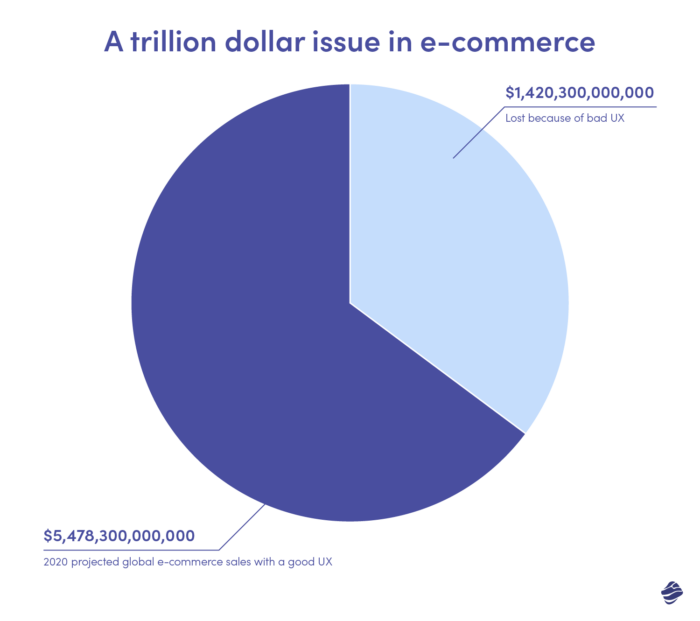
UX is something you cannot compromise upon. Now, it’s easy to offer a simple and intuitive user experience in the early stages of an app. But, when scaling later on, maintaining the same seamless user experience may be challenging.
What to consider during the MVP development phase to facilitate future scalability?
Now that you know what an MVP is and why scaling is essential, here are five considerations to keep in mind during the MVP development phase.
1. Architectural design
It’s a good idea to opt for a modular and scalable architecture design that allows you to update and integrate all app features independently. Avoid monolithic structures that might hinder future expansion.
For example, if you’re building an e-commerce store web app, it’s best to opt for independent microservices for product catalog, user account, and payment processing services instead of opting for one service that supports all three functions.
This way, if one service crashes, the other two will still work and buy you time to fix the issue. Similarly, if you want to grow one feature, you don’t have to scale the entire architecture.
2. Database design
Choose a robust database system that can handle increased data volumes. Also, structure your database to avoid data redundancy and optimize query performance. If you have unstructured data, consider opting for NoSQL databases. These offer better flexibility.
3. API-first approach
Develop your MVP with a strong emphasis on APIs. Well-structured APIs enable easy integration with external systems, third-party services, and future mobile apps. This makes your product more versatile.
4. Optimize and monitor performance
You can optimize performance by:
- Using content delivery networks (CDNs)
- Compressing images
- Employing caching mechanisms to reduce load times
This improves user experience early on and even as your product scales. It’s also essential to have a robust system of monitoring app performance from day one. Regular performance testing and detailed analytics can give great insights into your product’s performance.
5. User feedback integration
You also want to build mechanisms to gather user feedback right from the MVP stage. This feedback loop will help you decide which features to prioritize and how to improve your product as it grows.
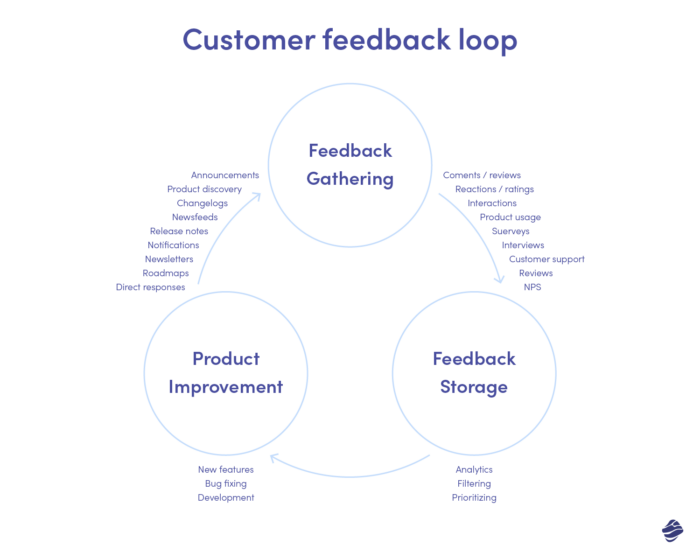
Software architectures that support scalability
Your app’s architecture is going to be your biggest investment. You should choose one of the three common software architectures that support scalability. These are:
1. Microservices architecture
Microservices divide your application into small, independent services that can be developed, deployed, and scaled separately. You can allocate resources to specific services based on demand.
It allows horizontal scaling and not vertical scaling, meaning you can distribute the workload across multiple resources to improve system performance and handle more traffic efficiently.
Given this, it’s ideal for MVPs that anticipate rapid growth or need frequent updates (such as e-commerce apps). However, it may require complex management owing to the involvement of multiple services.
It’s also worth noting that more and more businesses are adopting microservices architecture over the other two types — because of the financial feasibility it offers. This explains why the adoption of microservices will see a 16% increase over the next five years. So, it’ll continue to be the most feasible architecture type for a while.
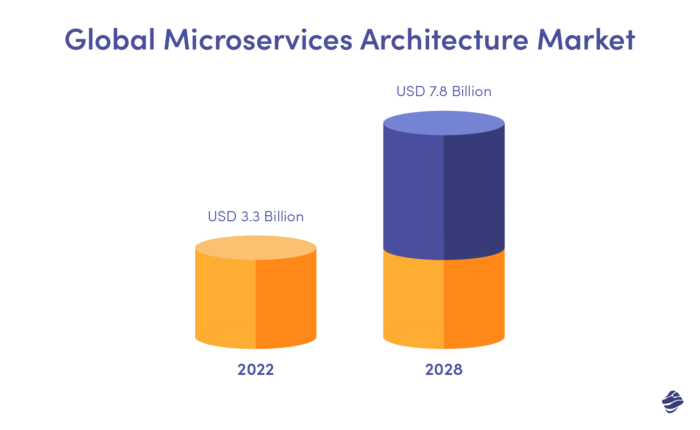
If you’ve messed up with your choice of software architecture during the MVP stage, there’s still time to reverse it with digital transformation services.
These services can help update your software architecture, change code, and swiftly transition from outdated digital infrastructure to the latest ones. You can read about the benefits of digital transformation services here.
2. Cloud-native architecture
Cloud-native architecture leverages cloud services (e.g., AWS, Azure, Google Cloud) to scale automatically in response to demand.
This approach eliminates the need for upfront infrastructure investment and allows your MVP to grow smoothly. It suits startups with unpredictable growth patterns — such as social media apps — because you pay for resources as you go.
The scalability focus of this software architecture is elasticity. This means the system will expand if there’s suddenly a high influx of users. But when the traffic is low, the system automatically adjusts to reduce running costs.
3. Monolithic architecture
A monolithic architecture binds all components of your application into a single codebase and database. So, if you wish to scale one thing, you must scale the entire app.
These suit simpler MVPs with predictable scaling needs (like hotel reservation apps). But they may hinder agility in the long run.
Strategies for managing and storing data effectively
As mentioned earlier, when scaling applications, you need to be mindful of your data storing and management techniques. If you have poor storage and management systems, you could risk user privacy, security, and overall growth of the app.
Here are five considerations for managing and storing data effectively during app scaling:
- Begin by identifying the types of data your MVP will generate and collect.
- Leverage scalable database solutions, such as NoSQL databases or cloud-based storage, to accommodate growing data volumes.
- Prioritize data security, employing encryption and access controls to safeguard sensitive information.
- Consider data redundancy and backups to prevent data loss during expansion.
- Regularly audit and optimize your data storage to ensure efficiency and cost-effectiveness.
Importance of a flexible user interface and user experience design
Based on the feedback your MVP receives, you’ll want to improve its overall user interface and experience. But try to keep it closely tied to the original brand appeal.
Here’s what you might want to keep in mind when scaling the app:
- Responsive design: A responsive design ensures that the UI adjusts and looks good across different device sizes, from smartphones to tablets to desktops.
- Modular design: Designing components in a modular way means they can be reused, rearranged, or replaced without disrupting the rest of the UI.
- Customizability: Allowing users to change certain UI elements according to their preferences can make the UI more flexible. Examples include changing themes, rearranging dashboard elements, or resizing panes. This is a simple way to provide a good user experience and keep the UI flexible.
- Future-proofing: Anticipate future technological advancements and design trends. This might involve considering things like high-resolution displays, emerging input methods (like voice or gesture), or new web standards.
- Fallback options: Sometimes, despite your best efforts, certain UI elements or features won’t work as expected across all scenarios. Having fallback options ensures that the user experience isn’t broken.
These measures enhance user satisfaction and future-proof the product, promoting more sales and user loyalty.
Note that 32% of people stop interacting with a brand they love after one bad experience.
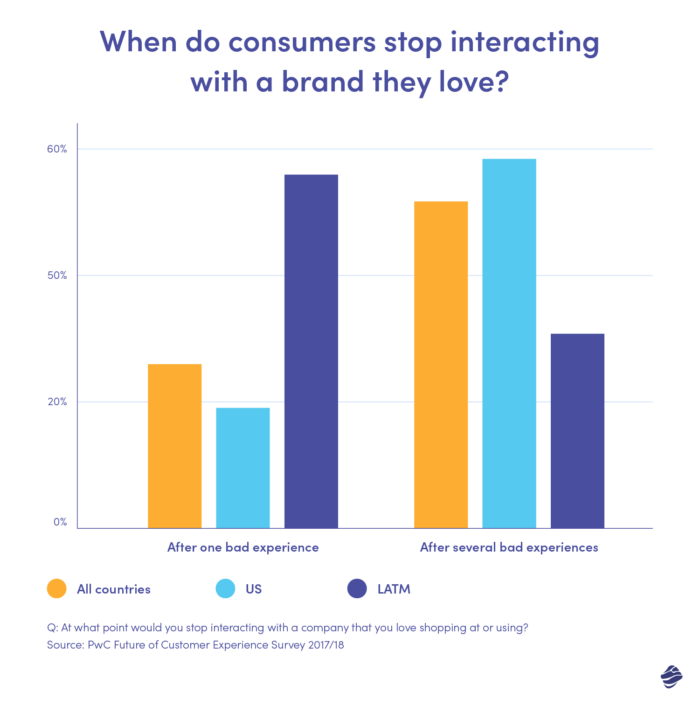
So, these measures will retain new visitors and ensure that your previous customers stay around.
Continuous monitoring and iteration after scaling the MVP
An MVP that can facilitate the larger market needs is not the end of the process. In fact, it is the beginning of the second most important phase — continuous monitoring and iteration.
This is where you will continuously track the response to your MVP (monitoring) and make changes accordingly (iteration). You might introduce new features, update old functionalities, or even revamp the product design.
Here is why continuous monitoring and iteration after scaling the MVP is mandatory:
1. Feature prioritization and development
The main concept behind using MVPs is to prevent loss, and monitoring helps you do exactly that. It allows you to gather invaluable user feedback and understand how users interact with the product on a larger scale.
You learn which features are desired and which pain points can be addressed. All of this helps you prioritize builds that the market needs.
2. Bug identification and fixing
As the user base grows, bugs, performance bottlenecks, and security issues will likely emerge. You will need to fix them immediately to prevent poor user experience. This can only be possible if you continuously monitor the MVP.
3. Adaptation to changing market conditions
Markets are dynamic. Customer preferences, competition, and technologies change daily. So, to stay on top, you must know which changes are needed to adapt to the market conditions.
4. Avoiding product stagnation
Each product has a life cycle. But this life cycle can be extended with the right decisions and strategies.
To do this, you need insights into user behavior, preferences, and pain points. You need to know which updates and improvements can keep the product fresh and aligned with user needs. Continuous monitoring and iteration provide you with all of this data.
5. Building trust and credibility
Lastly, demonstrating that you care about user feedback builds trust and credibility with your user base. They are more likely to stick around and refer your product to others, which sets you up for long-term success.
Top 3 examples of startups that successfully scaled their MVPs
Before we sign off, let’s check out three inspiring examples of great app scaling and successful products.
DropBox
MVP: A Video
Dropbox’s co-founder, Drew Houston, presented a video demonstration of his MVP rather than a functional product. In the video, he explained how the product would work—a simple way to store and share files in the cloud.
This approach allowed them to gauge interest and collect emails from potential users. The MVP scaled successfully because it addressed a common pain point and provided a solution that was easy to use, reliable, and secure.
Airbnb
MVP: Air bed & breakfast
Airbnb began with a simple idea: renting out air mattresses in their apartment to earn extra cash. Their MVP was named Air Bed & Breakfast. And it allowed hosts to list their extra space for travelers.
The founders created a basic website, took photos of their own apartment, and tested the concept with three guests. This humble start evolved into a global platform with millions of hosts and travelers.
Airbnb’s success speaks for its iterative approach to product development and its ability to scale while focusing on user experience and trust.
Buffer
MVP: Simple social media scheduling
Buffer’s MVP addressed the challenge of managing social media posts efficiently. Their basic platform allowed users to schedule posts for multiple social media accounts.
Although it started as a simple tool, it quickly expanded by listening to user feedback and adding features that made social media management more convenient and effective. Today, the platform has thousands of users and millions in revenue!
MVPs are all about scaling
Notice that these examples shared a few common traits: they identified real problems, created basic but functional solutions, tested their MVPs with real users, collected feedback, and iterated.
Plus, they invested in scalability right from the start — as soon as the MVP was validated. For example, Dropbox was initially based on Amazon’s S3. This allowed them to develop their product and focus on marketing without worrying about the underlying infrastructure.
Once they scaled their MVP to a full-fledged product, they developed their own infrastructure. This is an excellent example of leveraging existing solutions during the MVP stage to keep things simple.

